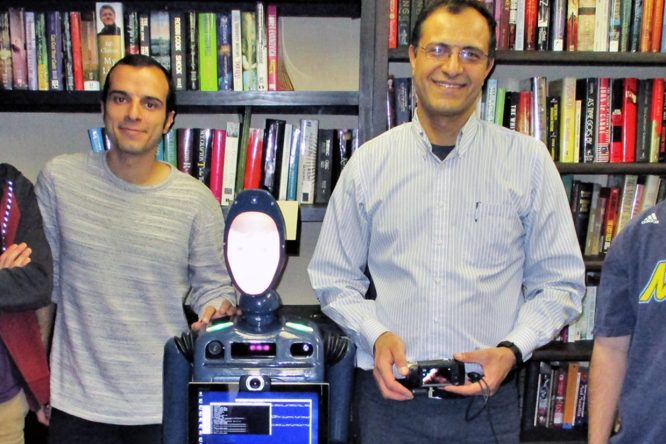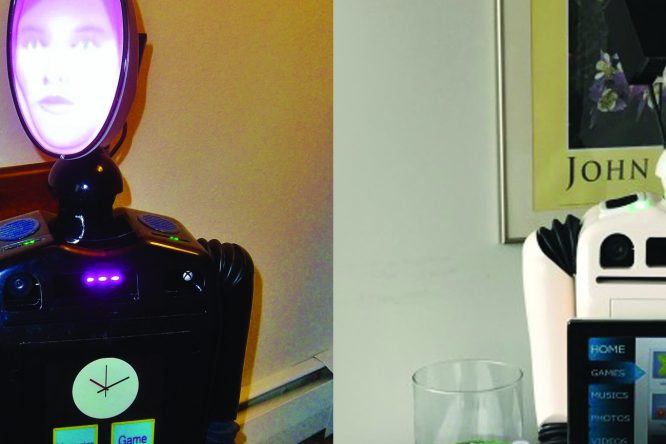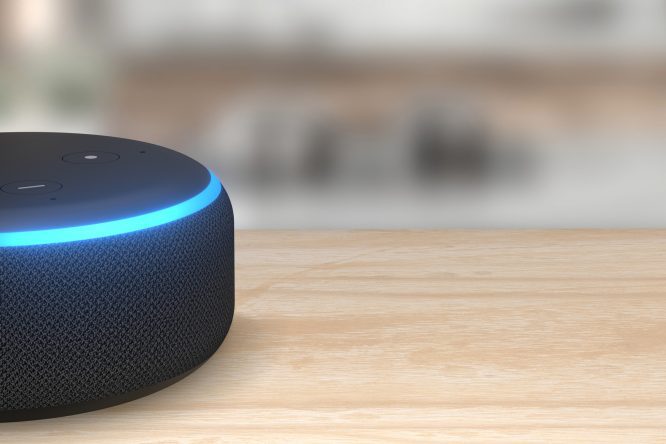Eaton Senior Communities is home to 164 residents and, occasionally, a breakthrough, socially assistive robot called Ryan — created at the University of Denver — which could soon be available to the general public. In a series of posts, I’m talking to people involved in this fascinating project and getting their perspectives on how this lifelike “companionbot” is helping older adults who are living with depression and dementia.
Today, I’m speaking with Sarah Schoeder, wellness director at Eaton Senior Communities, who is a liaison between the residents and the team of scientists developing Ryan. Sarah has been serving the geriatric community for 38 years, including 20 years as an LPN in a skilled nursing facility.
Wayne: Sarah, what was it like trying to get residents to participate in the robot pilot studies?
Sarah: I would visit them and drop this idea in their lap, and they’d look at me like I was crazy. I’ve approached a lot of residents whom I didn’t expect to get involved — some of them in their 90s. To see them go from giving me a look like, “You’re kidding me” to becoming excited, looking forward to the sessions and wanting to be involved in the next set of trials, it’s been amazing.
Wayne: Did the residents have input about the changes in the robot?
Sarah: Yes, residents would give feedback about what they’d like the robot to look like and sound like — what they’d like it to say. Then, the team would make changes.
Wayne: How has the robot changed over time?
Sarah: Ryan’s facial features appear more natural, and the improvement in the movement of her head has given her a “softer touch.” Her smile is beautiful, and she makes me want to smile back!
Wayne: Were you concerned that residents might not want to finish the project?
Sarah: Yes, but all residents in both trials of 2018 completed all sessions, which spoke highly of the project goals. Some residents were hesitant and perhaps a little fearful, but after spending time with Ryan, their attitudes completely changed. Ryan has touched the lives of Eaton residents by providing unconditional companionship and interest in their lives. The improvement in mood and cognition was apparent as residents were exposed to educational opportunities and stimulating interactions.
Wayne: Does Ryan have a sense of humor?
Sarah: Yes! I’ll give you an example. One resident who was hosting Ryan in her room was walking down the hall, and she said to me, “Can you believe what that crazy thing just said to me?” She went on to say that she and Ryan were talking about how the Denver Broncos were competing against the Patriots in the Super Bowl, and Ryan announced that she was a Patriots fan — in the heart of Bronco country!
Wayne: How will this new technology help people age in place?
Sarah: One of the biggest reasons people move into assisted living is that they can’t manage their medicines. If Ryan reminds me to take my medicine, that might be the defining moment that keeps me home.
Wayne: How has this experience changed your views on robotics?
Sarah: If someone told me five years ago that I’d be sitting here telling you robots could be valued members of a health care team — that I’d be endorsing them as part of the health care model — I would not have believed it, but I’ve learned that the robot is not replacing me as a nurse and caregiver. It’s just empowering me to be more successful in senior living.
Sarah will share stories about resident interactions with Ryan in next week’s blog.



